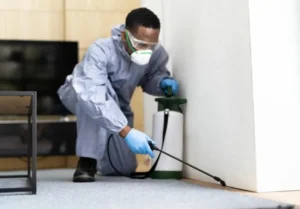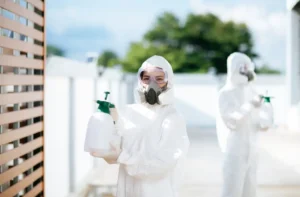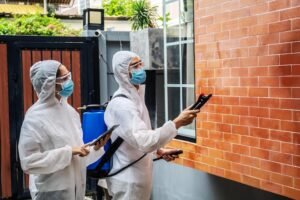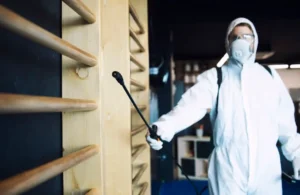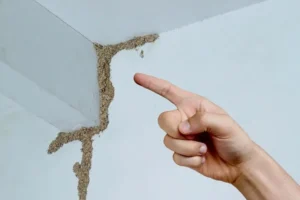Norfolk homeowners face constant threats from termites due to the region’s humid climate and coastal environment. These silent destroyers can cause thousands of dollars in damage before property owners even notice their presence. Regular termite inspections serve as the first line of defense against these destructive pests, helping homeowners protect their most valuable investment.
Norfolk’s Termite Risk Factors
The Hampton Roads area creates ideal conditions for termite colonies to thrive. High humidity levels throughout most of the year provide the moisture termites need to survive and reproduce. Norfolk’s proximity to water sources, combined with frequent rainfall, creates environments where termite populations can establish and grow rapidly.
Subterranean termites, the most common species in Virginia, build their colonies underground and travel through mud tubes to reach wood sources in homes. These tubes often remain hidden behind walls, under flooring, or in crawl spaces where homeowners rarely venture. By the time visible damage appears, colonies may have been feeding on structural components for months or even years.
Climate Impact on Termite Activity
Norfolk experiences mild winters that allow termite colonies to remain active year-round. While termite activity typically peaks during spring and summer months, colonies continue feeding and expanding during cooler periods. This extended activity season increases the risk of significant structural damage compared to regions with harsher winter climates.
Temperature fluctuations common in coastal Virginia can drive termites to seek more stable environments inside homes. Heated basements, crawl spaces, and areas near heating systems provide consistent temperatures that support termite survival during temperature extremes.
Benefits of Professional Termite Inspections
Licensed termite inspectors possess specialized knowledge and equipment necessary to detect early signs of infestation. Professional inspections go beyond surface-level examinations to identify conditions that might attract termites or indicate active colonies.
During detailed inspections, professionals examine areas homeowners typically cannot access safely or thoroughly. Crawl spaces, attics, basements, and exterior foundations receive detailed attention during these evaluations. Inspectors use moisture meters, flashlights, and probing tools to identify damage that may not be visible to untrained eyes.
Detection Methods & Technology
Modern termite detection employs various techniques to locate active colonies and assess damage levels. Infrared cameras can identify temperature variations that indicate termite activity or moisture problems. Acoustic detection devices pick up sounds produced by termite feeding activity within wood structures.
Moisture meters help inspectors identify areas with increased humidity levels that attract termites. These tools can detect moisture problems behind walls or under flooring where visual inspection is impossible. Early moisture detection allows homeowners to address problems before they attract termite colonies.
Timing & Frequency of Inspections
Annual termite inspections provide optimal protection for most Norfolk homes. However, certain factors may necessitate more frequent evaluations. Homes with previous termite activity, properties adjacent to wooded areas, and structures with moisture problems benefit from semi-annual inspections.
Spring inspections are particularly valuable because they occur before peak termite activity begins. Early detection allows for treatment implementation before colonies reach maximum reproductive capacity. Fall inspections help identify any new activity that may have developed during the active season.
High-Risk Property Factors
Properties built on slab foundations face increased termite risk because colonies can access structures through small cracks in concrete. Older homes with crawl spaces require extra attention due to aging moisture barriers and ventilation systems. Properties with land that retains moisture near foundations need regular monitoring.
Homes that have experienced water damage from storms, plumbing leaks, or flooding require immediate termite inspections. Moisture-damaged wood becomes more attractive to termite colonies and provides easier access to food sources.
Cost Considerations & Property Value Protection
Regular termite inspections are a small investment compared to repair costs from undetected infestations. Structural repairs from termite damage can range from hundreds to tens of thousands of dollars depending on the extent of colony activity.
Property values suffer significant impacts when termite damage is discovered during real estate transactions. Buyers often negotiate price reductions or request extensive repairs before completing purchases. Regular inspection records demonstrate responsible property maintenance and can support market valuations.
Insurance & Documentation Benefits
Most homeowner insurance policies exclude termite damage from coverage, making prevention through regular inspections even more important. Documented inspection history can support warranty claims with termite treatment companies and provide valuable information for future property sales.
Maintenance records that include regular termite inspections may qualify homeowners for discounts on pest control services or extended warranty coverage. Professional documentation helps track any changes in property conditions that might affect termite risk over time.
Choosing Qualified Inspection Services
Licensed pest control professionals bring specialized training and experience to termite detection activities. Look for inspectors with specific termite expertise rather than general pest control knowledge. Certifications from recognized industry organizations indicate commitment to professional standards and continuing education.
Reputable inspection services provide detailed written reports that document findings and include recommendations for addressing any issues discovered. These reports should include photographs of problem areas and clear explanations of any risks identified during the evaluation process.



